Chevrolet Camaro ZL1 1LE: First Drive
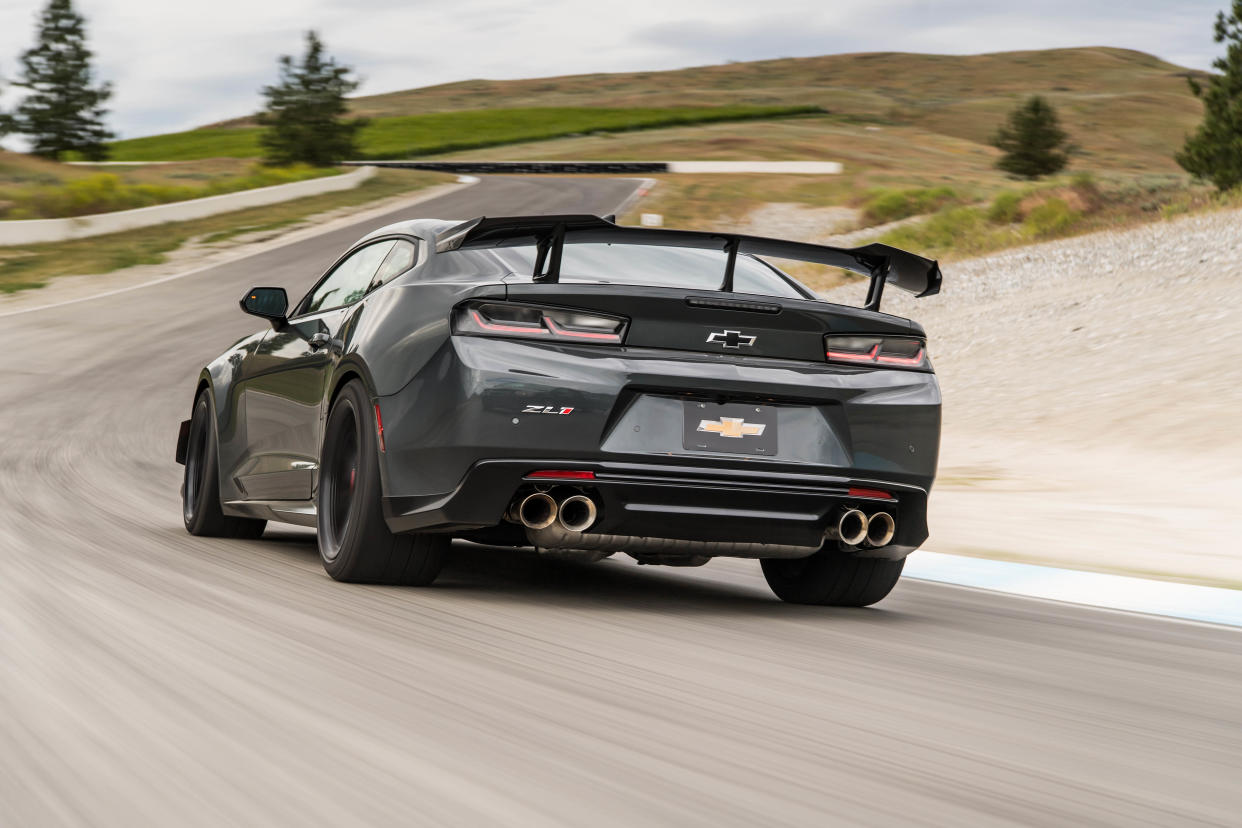
Chevrolet created the new Camaro ZL1 1LE to lop whole seconds, not mere fractions, off the Camaro ZL1’s already stellar track times. And it does so without changes to the ZL1’s supercharged 6.2-liter V8. No more power was necessary - 650 hp and 650 lb-ft of torque is more than sufficient. Engineers instead concentrated, with Puritanical single-mindedness, on the details.
For example, the six-speed manual gets a shorter sixth-gear ratio than the regular ZL1, because it proved quicker around the Nürburgring. At the Ring, the 1LE only shifts into sixth gear once. Once. The 10-speed automatic isn’t available, because it’s 50 pounds heavier than the manual, and the 200-mph top speed provided by the automatic’s extra gears isn’t useful on road courses.
The hardware exclusive to the 1LE reads like a race engineer’s letter to Santa and more than justifies the $7500 surcharge over a ZL1. As in the last Camaro Z/28, spool-valve dampers are used at every corner. Here, they’re housed in stiffer, lighter, and smaller aluminum housings. To precisely locate the front struts and improve transient responses, the rubber usually sandwiched between the struts and the strut towers is removed. The upper strut mount also features a rotating assembly that allows for camber adjustments, and the threaded body provides a 0.79-inch height adjustment. At the rear axle, the suspension’s subframe is hard mounted to the unibody to eliminate unwanted play.
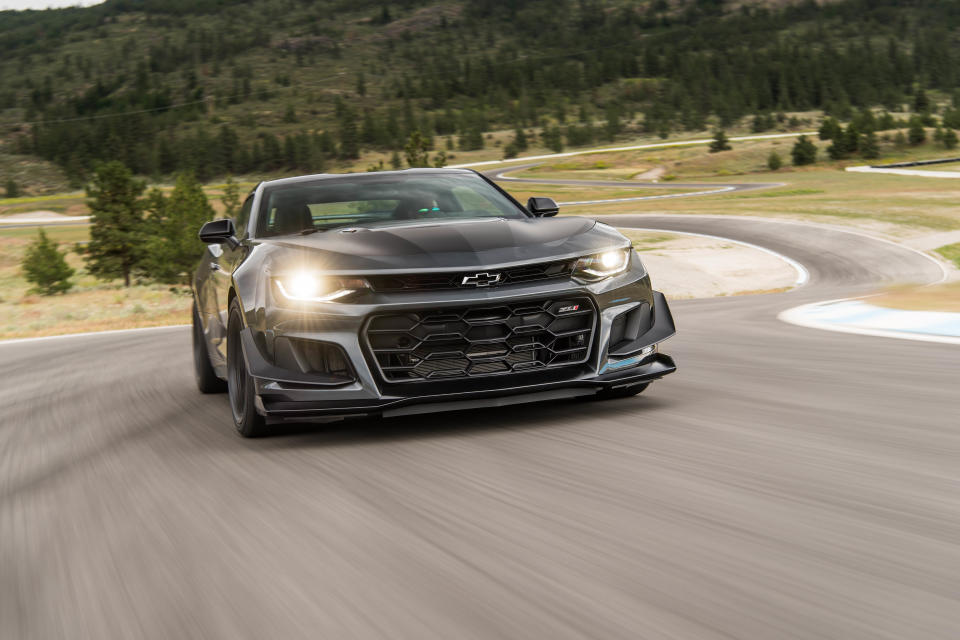
Compared with the standard ZL1, the 1LE’s tires are 20 millimeters wider all around. They’re mounted on wider wheels, possible in front only because the struts are slimmer. To counteract the weight that comes with the added width, diameter shrinks to 19 inches, compared with the ZL1’s 20s. The wheels are just large enough to fit over the 15.4-inch steel rotors and six-piston calipers up front. Clearance between the caliper and the inside of the wheel is tight; just try slipping a credit card between the two. The Goodyear Supercar 3R tires (305/30R-19 in front and 325/30R-19 in back) are all new. Goodyear engineers spent three years developing the tire, shadowing the Camaro crew at racetracks around the globe, testing 38 iterations before arriving at the final version, which looks like a race tire stamped with a few shallow grooves.
If the 1LE looks like a Camaro in KISS makeup, at least it’s functional. To create downforce, there are two black plastic dive planes mounted to the front bumper. An ankle-smashing front splitter juts out like a plow. The ZL1’s big mouth has been opened even wider to divert more air to 11 radiators. Mounted to the trunklid is a tall carbon-fiber spoiler that contributes heavily to the 1LE’s 300 pounds of downforce at 150 mph.
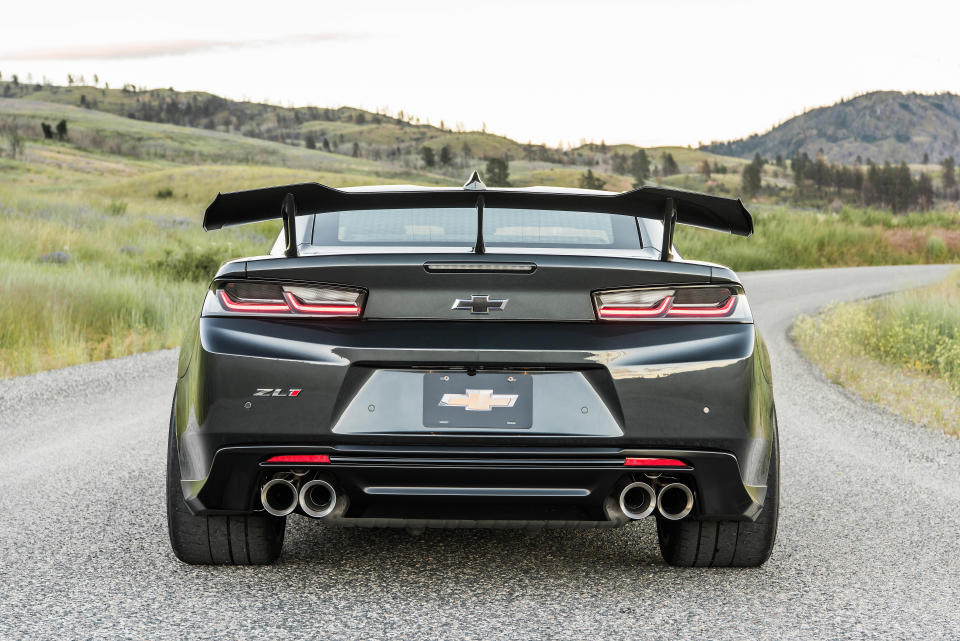
At the new Area 27 racetrack, a 3-mile road course paved into a valley in the Cascade Mountains near the Washington border in Oliver, British Columbia, Chevrolet let us chase as many laps as we needed to get up to speed in the 1LE. A brutally stiff suspension on the street works brilliantly on track, where body motions are kept to a minimum. Heat up the brakes and the pedal travel increases, but the stopping power remains staggering and the 1LE is arrow stable under braking.
At lower speeds and on the street, the 1LE impresses with warp-drive acceleration and livewire steering that sends unblemished information direct from the viscid Goodyears. Going faster reveals the 1LE to be a patient teacher, provided you work through the various stages of Chevy’s Performance Traction Management system. As in other Camaros and the Corvette, selecting Dry, Sport, or Sport 2 settings leaves the traction control operating while dialing back the stability control system’s intervention. Switch to Race mode and the safety net of stability control disappears entirely, with just the traction control system working to maximize grip under acceleration. No need to delicately toe the throttle on corner exit. Floor it and the system attempts to deliver the right amount of power for the available grip.
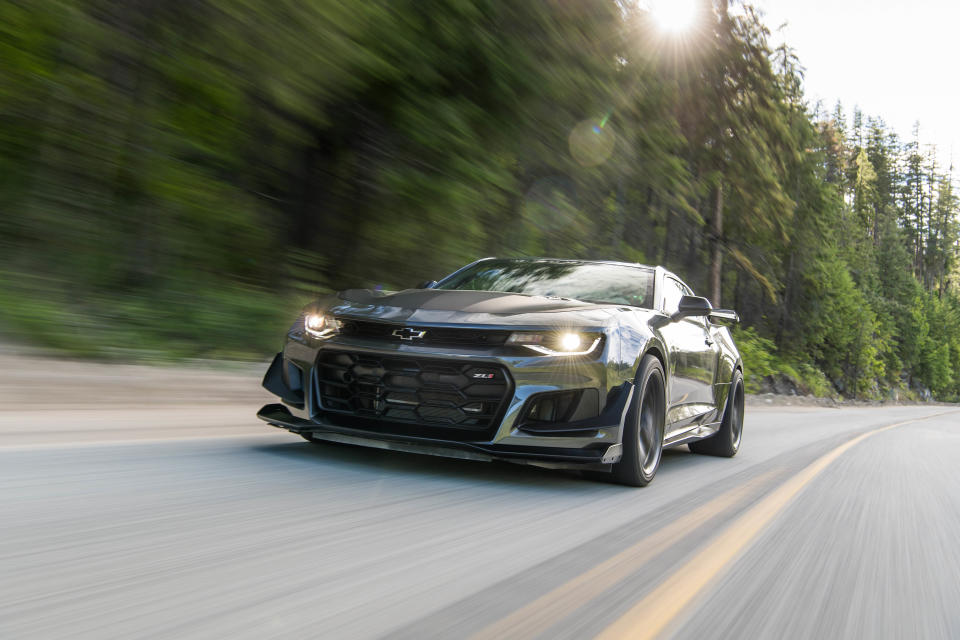
Lapping with everything shut off is like bondage without a safe word. It’s not that you can’t trust the 1LE, but it’s easy to dial up trouble from that supercharged V8. Too much engine at any point sends the tail wagging. Provided you didn’t do anything too stupid, the Goodyears promptly return you to the safe side of the limit. But an unchecked and poorly driven 1LE can be an unforgiving master.
It doesn’t help that the 1LE never really shrinks around the driver. Some of that is due to the glass slit that passes for a windshield, but it’s really because the 1LE is a more than 3800-pound machine capable of gut-punching acceleration and grip. It is some 60 pounds lighter than a standard ZL1, thanks to a diet that includes the aluminum chassis bits, thinner rear glass, a non-folding rear seat, and lighter rear-seat padding. But the 1LE isn’t a stripper like the old Z/28. Standard equipment includes an eight-inch touchscreen, two-zone climate control, a Wifi hotspot, a head-up display, and heated and cooled power-operated Recaros.
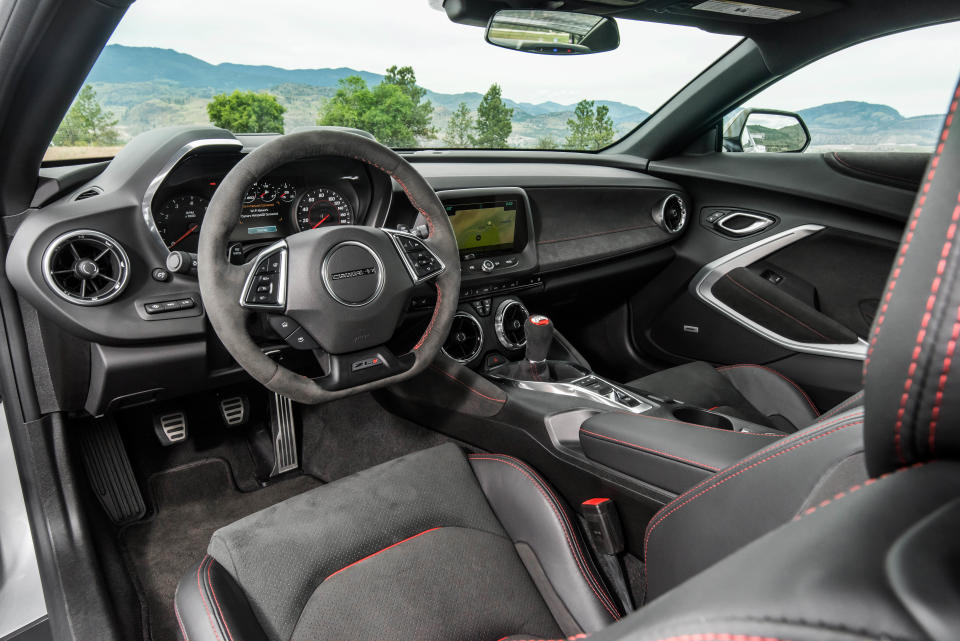
Those cooled seats are a must have. Wrestling a weaponized Camaro is deeply satisfying, but it’ll leave you sweating and vibrating from adrenaline. Mastering a 1LE requires skill, reflexes, bravery, and hyper-focused concentration. Over an afternoon, I physically and mentally exhausted myself chasing lap times. Meanwhile, the 1LE barely broke a sweat and asked for nothing more than fuel (about three tanks of it, actually). You’ll get tired of chasing lap times before the ZL1 1LE does. Chances are, it’s more serious than you are.
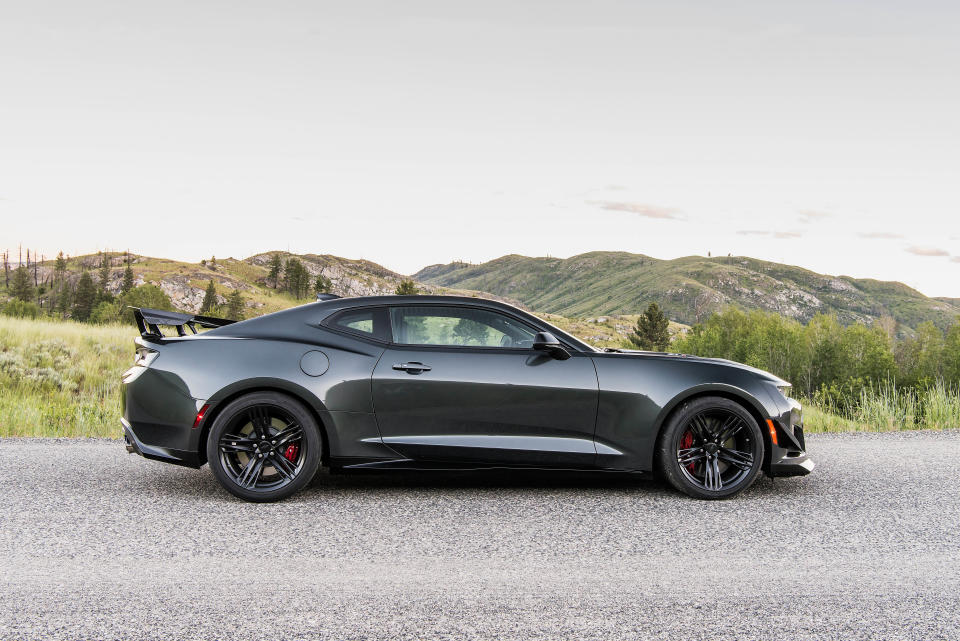
You Might Also Like

